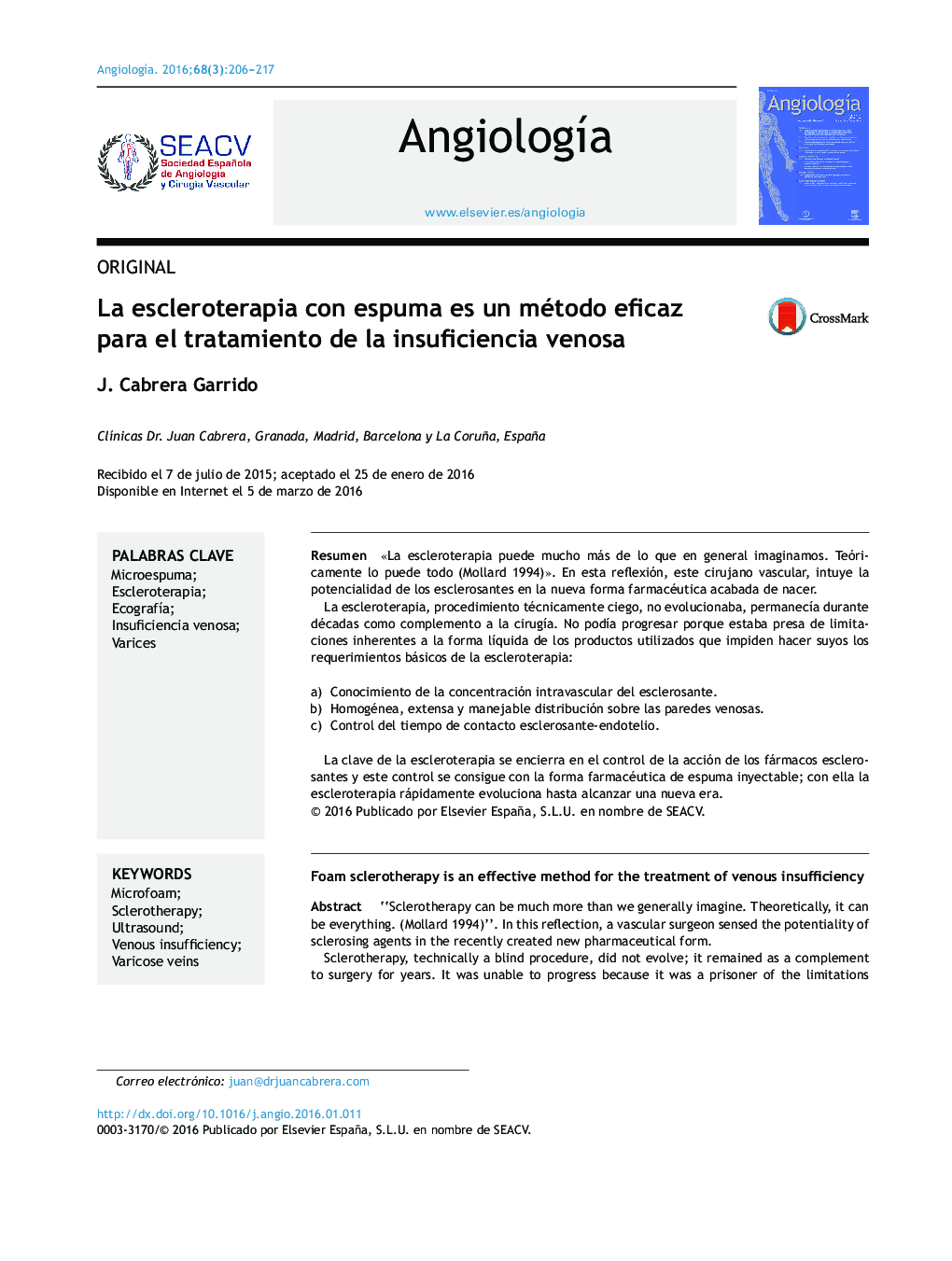| کد مقاله | کد نشریه | سال انتشار | مقاله انگلیسی | نسخه تمام متن |
|---|---|---|---|---|
| 2867285 | 1171080 | 2016 | 12 صفحه PDF | دانلود رایگان |

Resumen«La escleroterapia puede mucho más de lo que en general imaginamos. Teóricamente lo puede todo (Mollard 1994)». En esta reflexión, este cirujano vascular, intuye la potencialidad de los esclerosantes en la nueva forma farmacéutica acabada de nacer.La escleroterapia, procedimiento técnicamente ciego, no evolucionaba, permanecía durante décadas como complemento a la cirugía. No podía progresar porque estaba presa de limitaciones inherentes a la forma líquida de los productos utilizados que impiden hacer suyos los requerimientos básicos de la escleroterapia:a)Conocimiento de la concentración intravascular del esclerosante.b)Homogénea, extensa y manejable distribución sobre las paredes venosas.c)Control del tiempo de contacto esclerosante-endotelio.La clave de la escleroterapia se encierra en el control de la acción de los fármacos esclerosantes y este control se consigue con la forma farmacéutica de espuma inyectable; con ella la escleroterapia rápidamente evoluciona hasta alcanzar una nueva era.
“Sclerotherapy can be much more than we generally imagine. Theoretically, it can be everything. (Mollard 1994)”. In this reflection, a vascular surgeon sensed the potentiality of sclerosing agents in the recently created new pharmaceutical form.Sclerotherapy, technically a blind procedure, did not evolve; it remained as a complement to surgery for years. It was unable to progress because it was a prisoner of the limitations adherent to the liquid form of the products used, which that impeded compliance with the basic requirements of sclerotherapy:a)Knowledge of the intravascular concentration of the sclerosing agent.b)Homogeneous, extensive, and manageable distribution of the venous walls.c)Temperature control of the sclerosing agent-endothelium contact.The key to sclerotherapy involves controlling the action of the sclerosing drugs, and this control is achieved in the pharmaceutical form of an injectable foam, and with this, sclerotherapy rapidly advanced until reaching this new era.Nowadays, different therapies are used in the treatment of varicose veins, including radiofrequency and laser ablation, stripping, surgery, mechanical-chemical systems, steam, and glue, with very different outcomes.Sclerotherapy is a minimally invasive technique used for more than a hundred years, and useful for treating tiny little veins, until recently, in 1993, a pharmaceutical grade foam was developed that succeeded in treating large varicose veins, and is imitated by many others. The physical-chemical features of these foams vary considerably among themselves, depending on the production technique, concentration of sclerosing agent, types of gases used, gas/liquid proportion, type of gas/ size of bubble ratio, as well as varying in their safety and therapeutic use.The optimal liquid/gas proportion is obtained when there is sufficient liquid for the bubbles to be spherical and with the smallest diameter possible, but without introducing excess sclerosing liquid, which is described as kugelschaum (wet foam) or alternatively, it forms polyederschaum (dry foam). A series of experimental and theoretical studies have been conducted with the purpose of investigating the mechanical and rheological properties of the foams. However, to study its dynamic behaviour is a challenging theoretical problem, due to the complex interaction between the physical phenomena that occur in different longitudinal scales (that is to say, from the molecular to the macroscopic).And, in this interesting time of the evolution of the injection of drugs deposited over bubbles, is where we currently are.
Journal: Angiología - Volume 68, Issue 3, May–June 2016, Pages 206–217